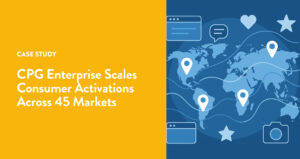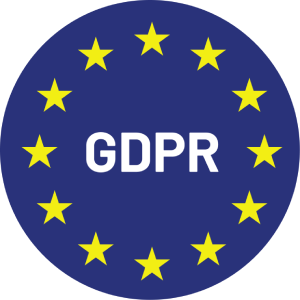This is the first in a series of posts about zero-party data and privacy-first personalization. Next, read: How To Collect Zero-Party Data.
The privacy revolution challenges traditional customer experience solutions
The privacy revolution has arrived. Changing attitudes, new regulations, and the demise of third-party cookies and Apple’s IDFA have disrupted traditional marketing practices built on first-party and third-party data, creating a pressing need for brands to invest in ethical and compliant alternatives through customer experience solutions.
What’s more, when COVID-19 hit, brands shifted their focus to ecommerce—a trend that continues to accelerate, making the need for better digital audience data even more urgent. Add it all up, and marketers have a real challenge on their hands—and for many, zero-party data (ZPD) is the favored solution.
Zero-Party Data as the Favored Solution
Forrester Research defines zero-party data as “data that a customer intentionally and proactively shares with a brand. Customers share ZPD with the expectation it will be used for their benefit.
Because ZPD is explicit, marketers don’t have to guess the meaning of the data to put it to good use. In the words of Forrester, “zero-party data provides explicit interest and preferences — and you must use it to improve the value you provide to consumers.”
Just a single data point goes a long way by revealing a key facet of how customers want to relate to a brand, and why. For these reasons, ZPD is at the heart of “Privacy-First Personalization”—the set of principles, practices, and emerging technologies built from the ground up to deliver experiences that are always welcome, always relevant, and always compliant.
Bringing Privacy-First Personalization to Life
Consider how a skin-care brand might bring Privacy-First Personalization to life. The brand can use a product finder quiz (or a conversational opt-in, or a survey) to ask customers about their skin-care goals, skin type, and skin sensitivity, along with permission to use the data to personalize future interactions.
From that point, the brand can speak directly to each customer’s individual needs. Moreover, the brand can provide a secure “portal” on its website where customers can update or add data to fine-tune their relationship with the brand. This gives customers transparency, choice, and control—and it builds trust.
Today’s consumers have heightened concerns about their personal data, and brands are navigating a dynamic and uncertain regulatory landscape with GDPR in 2018, CCPA in 2020, CPRA in 2023, and whatever comes next.
Unlike first-party and third-party data, ZPD gives brands a future-proof foundation for personalization. It should come as no surprise that 49 percent of marketers say ZPD is their most favored solution, and Forrester considers ZPD to be “the most valuable data opportunity of all.”
By its nature, ZPD stands in stark contrast not only to third-party, but first-party data too. A side-by-side comparison makes it clear:
|
Zero-Party Data |
First Party Data |
|
Personal context data (e.g. preferences) |
Behavioral (e.g. clickstream) and transactional data |
|
Knowingly & intentionally self-reported by customers |
Quietly observed and accumulated by brand |
|
Forward-looking, predictive |
Historical record of events, like breadcrumbs |
|
Meaning is explicit, no guesswork |
Meaning is inferred, requires guesswork |
|
Customers expect it to be used for their benefit |
Usage is unexpected, and sometimes creepy |
|
Customers update it to fine-tune their experience |
Customers have little visibility, choice, control |
3 Core Practices of Privacy-First Personalization
How can you bring Privacy-First Personalization to life for your brand? At a high level, it involves three core practices:
- Unify ZPD from all sources into ZPD profiles. Creating digital experiences to systematically collect ZPD is easy, and many brands already have existing sources they can tap into, like conversational opt-ins, guided shopping quizzes, next-best questions, surveys, digital campaigns and promotions, chatbots, loyalty programs, and email preference centers. Every source should integrate with and progressively enrich your ZPD customer profiles. Learn more about data collection experiences.
- Give customers transparency and control over their profiles—and build trust. Make it easy for customers to keep their ZPD profiles up-to-date via a secure customer portal, aka preference center, on your website or app. Preference centers empower customers to continuously improve their experience with your brand. Learn more about preference centers.
- Activate ZPD to improve customer experience solutions. Use ZPD to personalize the products, content, and offers you show to each customer or segment at key moments of engagement on your website, app, emails, and other addressable channels like custom audiences on Instagram and Facebook.
Zero-party data is brand-specific, so define your ZPD data model around the most important customer attributes for your business. Some attributes may be immutable or long-lived (e.g., a personal characteristic, or a list of favorites), while others may be shorter-lived (e.g., plans to take a family vacation or renovate a kitchen). Your ZPD profiles should support multiple data types and essential meta-data for each attribute—e.g., an “update after” date, so you can automatically refresh the attribute on a certain cadence.
Finally, make sure you can get data in and out easily and securely via a ZPD API so you can connect ZPD to all of your teams and tools while safeguarding privacy. If you’re interested in learning how Wyng can optimize your zero-party data strategy and privacy-first personalization efforts, contact us for a demo.









